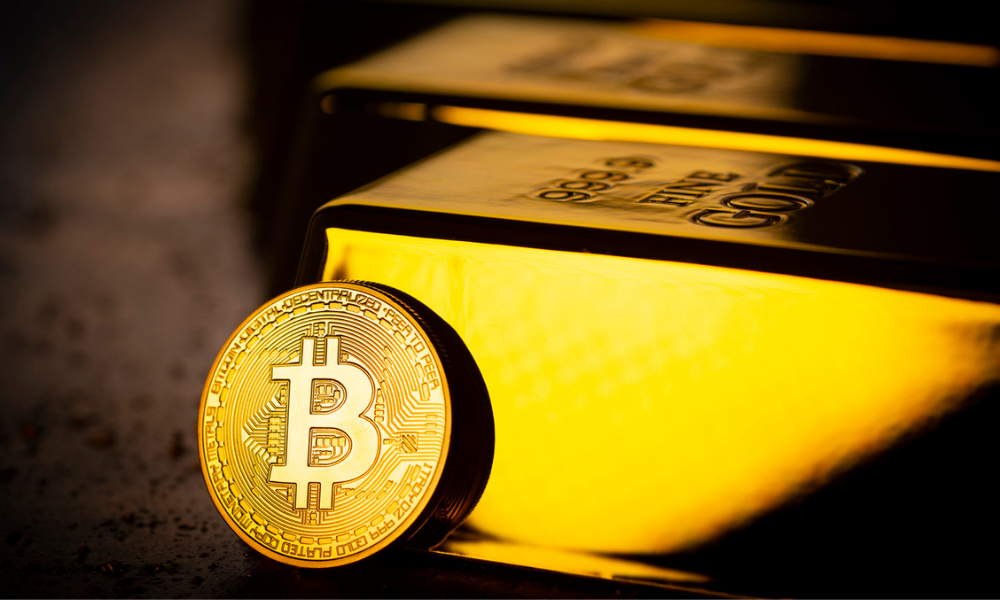"Godfather of Gold" explains why he's nervous about the U.S. economy and dismisses any correlation with Bitcoin

The “Godfather of Gold” has dismissed talk of any correlation between gold bullion and Bitcoin, and reminded investors there are other factors besides rising inflation that can sustain the recent rally.
With gold trading around $1,900 an ounce on Friday, up more than 8% since the start of Q2, George Milling-Stanley, Chief Gold Strategist at State Street Global Advisors, told WP there is little doubt investors are now taking inflation risks more seriously.
With the Fed’s stance that this is transitory, he doesn’t believe people should get too worried and that sustained inflation of 4%, as some were predicting, is unlikely. However, he admitted nobody’s really sure. Janet Yellen, Secretary of the Treasury, has been backpedalling furiously from her comments about having to act if the economy overheats, which added to investors’ concerns around an early rate hike.
Milling-Stanley said: “Are we in for sustained good economic growth or are these numbers going to prove transitory as well? That’s something a number of investors have talked to me about. If the inflation piece is transitory, then wouldn't it logically follow that the economic rebound might be transitory as well? You look for safe havens and real assets when that's an area of concern.”
With Bitcoin having plummeted in recent weeks, coinciding with the rally in gold, a high-profile JP Morgan analyst suggested investors were selling their crypto and buying into gold, the reverse of what he suggested happened a couple of months ago when Bitcoin surged.
Milling-Stanley is clear that he and his team have found no correlation between the two assets and that the majority of investors understand the two do very different jobs.
For those that want “the possibility of blue skies” but with extreme volatility and high risk, crypto is the place to go. Gold, he added, provides stability, reduces risk and historically improves risk-adjusted returns.
He explained: “The Bitcoin and crypto story is all about returns. We’ve got only 12 years of life to go on with the oldest cryptocurrency but over that period it has been almost 10 times more volatile than gold. And people complain that gold is a volatile asset!
“They do very, very different jobs. Gold will reduce your risk and increase your returns over time, and cryptos, with their volatility, to my mind, are not going to become the long-term strategic allocation of choice.”
Whether investors should increase their exposure to gold depends on their starting position, of course. Many are comfortable at around 5%, while Milling-Stanley said that he believes 10% is now the optimal level for returns, depending on a client’s tolerance and liquidity needs.
He stressed that gold doesn't need inflation to go up and that there are other dynamics at work, like pullbacks in the equity markets and encouraging signs in emerging markets' gold jewelry consumption, which has been boosted by China’s relatively effective pandemic recovery.
The current gold price is slap-bang in the middle of Milling-Stanley’s base case for 2021, which he outlined at the start of the year. His bullish case is that it could yet trade between $2,000 and $2,300 before the year is out. It’s a promising scenario for State Street’s flagship gold ETF, SPDR GLD, which has about $64 billion of assets and provides investors with exposure to the gold price.
Milling-Stanley said: “There is a significant possibility of the price getting back up above $2,000. If we get that rebound in gold jewelry demand, which seems to be happening, then all to the good. India is obviously a bit of an issue because they are having renewed outbreaks of COVID, although so far, they've been relatively localized and easy to contain.”
Marry this with Milling-Stanley’s nervousness about the U.S. economy (it being transitory like inflation) and the potential for stocks and bonds to weaken together, like they did last March, and he backs his 10% gold allocation to be a suitable allocation for many investors moving forward.


